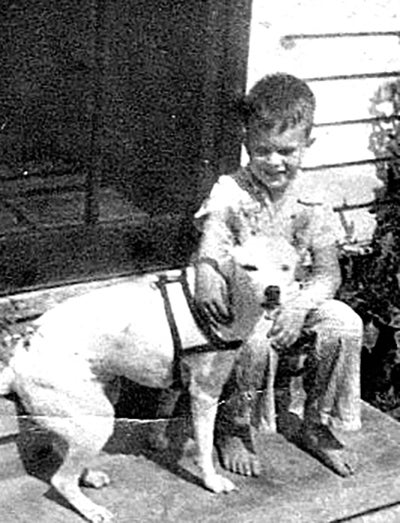And Now You Know: The Bluffs on the Sabine River
Published 12:07 am Saturday, August 28, 2021

- And Now You Know
|
Getting your Trinity Audio player ready...
|
When Resin Green was looking for a place to call home traveling up the Sabine River, he came to the first high point, a bluff, and made it his home. The place was named “Green’s Bluff”; it eventually became Orange. Other settlers going farther upriver settled on other bluffs that took on their names. Even though some of the settlements are gone, today, there are still a few settlements on the bluffs of the Sabine.
The first bluff above Orange is Niblett’s Bluff on the Louisiana side of the river. The bluff takes the name of the man who settled in the area and built a small plantation. Niblett’s Bluff was a busy entry point into Louisiana and in its prime had a store, a post office, and a school for children of the settlement there.
During the Civil War, it was the site of Camp Pleasant, an important Confederate Army post. Camp Pleasant was the first defensive post above Orange in the event of a Union invasion.
Today there is not much left at Niblett’s Bluff. There is church, a cemetery, a Calcasieu Parish park and a small settlement. It is probably the most populated of the bluffs on the Sabine.
On the Texas side is Morgan’s Bluff where the pumping station for the Sabine River Authority is located. At one time there were some camps and a few residences located there.
West Bluff was named for Jim West who settled there with Joe Ellis. There are still a number of families living in the area. In the time before the large lakes were created by the dams on the Sabine and other rivers, there were a number of camps and summer homes on the river at West Bluff. It is not widely known and largely forgotten, but the West Bluff Road was once part of the Old Spanish Trail.
Ballew’s Ferry was located in the vicinity of West Bluff. The ferry route included about one mile to the tip of Sabine Island and then about a four mile trip around the tip of the island to the landing at Niblett’s Bluff. Richard Ballew was a former pirate and shipmate of Jean Laffite. After Ballew left Lafitte’s crew, he obtained a league of land above Orange from the Mexican government. He settled on the land and established his ferry service. Ships sent by Laffite sailed up the Sabine and delivered slaves to Ballew. The slaves were then sold to buyers from the United States. Texas at that time was part of Mexico.
There are rumors that due to the connection between Ballew and Laffite that there may be buried treasure in or along the banks of the Sabine. There have been efforts to find the treasure but to date no treasure has been found.
In the West Bluff area are the remains of the Old Beef Trail. Cattle were driven along this trail moving cattle from Galveston to New Orleans. The crossing on the Sabine was near the Narrows. Cattle were driven in the river and made to swim across. Calves too young or small to swim were loaded on a barge or a rope drawn ferry and hauled across the river.
Pruitt’s Bluff, not very well known, is located near the pipeline crossing.
Pine Bluff is located about one quarter mile from the Southern Pacific Railroad bridge. Bob Wilson and his father lived at Pine Bluff while working as bridge tenders for the railroad.
Over time, changes occurred that caused the importance of the activities at the Bluffs to change. After the railroad bridge was built across the river, there was not much need for hauling supplies by wagon across the river on ferries. There was a road built across the swampy marsh to Orange and a ferry was established to cross the river there. The access to Louisiana became easier with the railroad and the new road. Ballew closed his ferry and with that things began to change at Niblett’s Bluff, the store and post office closed. The school closed about 1910.
The Old Beef Trail gradually ceased to be used as more and more cattle began to be transported by rail. The route of the Old Spanish Trail shifted south to Orange and the new road through there.
As Orange grew, the activities at the Bluffs dwindled until today they are only memories.
“And now you know.”






